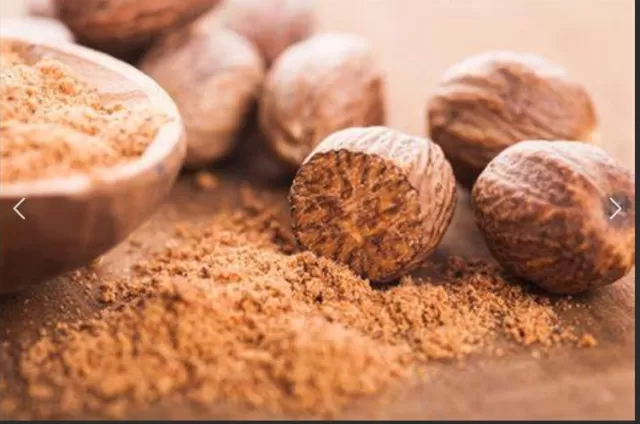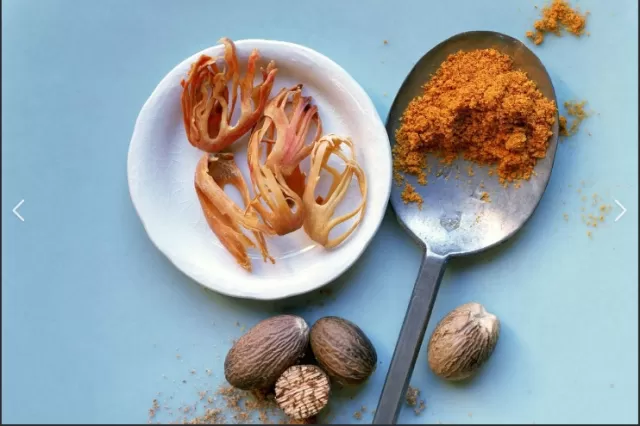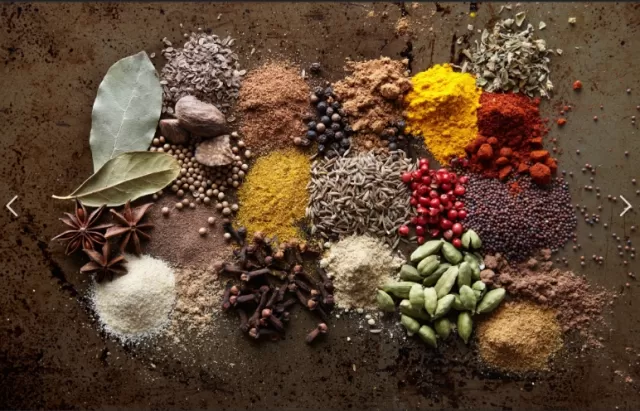Nutmeg Substitute Options for Your Recipes. In the realm of spice rack essentials, nutmeg stands shoulder to shoulder with cinnamon as a beloved staple in home kitchens. Renowned for its distinctive flavor and remarkable versatility, nutmeg is not just a seasonal must-have; it plays a year-round role in elevating a myriad of recipes. From imparting a delightful finishing touch to bechamel sauce to lending its signature flourish to holiday pumpkin pies, nutmeg has secured its place as an indispensable ingredient.
However, should you find yourself in the midst of culinary preparations only to discover an empty nutmeg container, fear not. This guide unveils a treasure trove of nutmeg substitutes, utilizing ingredients likely already nestled in your kitchen. Whether you’re perfecting a glass of holiday eggnog, infusing a creamy custard for quiche, or enriching the flavor of your go-to pumpkin dessert, these readily available alternatives will seamlessly step in to ensure your dishes maintain their delightful essence.
Embark on a journey of culinary ingenuity as we explore the art of substituting nutmeg, transforming your spice cabinet into a versatile ally. Let the aromatic possibilities unfold, ensuring that the absence of one spice doesn’t hinder the creation of flavorful masterpieces in your home kitchen.
Unveiling the Essence of Nutmeg: A Culinary Exploration

Ethan Frisch, the co-founder and co-CEO of Burlap & Barrel, a renowned single-origin spice company, sheds light on the true nature of nutmeg, revealing it to be the inner portion of a stone fruit that bears a resemblance to an under-ripe peach or apricot.
As the fruit ripens, its flesh undergoes a natural split, unveiling a vibrant red mace enveloping the dark, glossy shell housing the precious nutmeg within. The meticulous process of harvesting involves hand-picking the fruits, extracting the pits, sun-drying them, and delicately cracking open the shells to unveil the coveted “nut” concealed inside.
Originating from the Moluccas, a collection of remote islands in what is now modern-day Indonesia, nutmeg held exclusive cultivation in this region until the 1600s.
It was during this period that Dutch and British colonial endeavors seized control of the islands, leading to the transplantation of nutmeg trees to various other colonial territories. Notably, Burlap & Barrel predominantly sources its nutmeg from locations such as Zanzibar and Grenada, where the historical legacy of Dutch and British influences in nutmeg cultivation endures.
Exploring Alternatives: Nutmeg Substitutes for Culinary Creativity
While the unique flavor of nutmeg may pose a challenge to replicate precisely, the absence of this spice in your culinary arsenal shouldn’t hinder your recipe endeavors.
There are several viable nutmeg substitutes that can infuse your dishes with distinctive and delightful notes, allowing you to proceed with your culinary creations.
Unveiling the Culinary Companion: Mace, the Sibling Spice of Nutmeg

Derived from the same botanical source, mace and nutmeg emerge as inseparable siblings in the realm of spices.
While nutmeg is obtained from the seed or “nut” of the plant, mace represents the outer membrane encasing that very seed. Notably, the flavor profile of mace closely mirrors that of nutmeg, albeit with a slightly more robust intensity.
The interchangeability of these spices allows for a seamless 1:1 substitution in various culinary applications.
In terms of culinary versatility, mace proves to be an excellent alternative in recipes where nutmeg serves as a predominant flavoring agent.
Whether enriching the warmth of eggnog or infusing spiced cookies with a distinctive taste, mace stands ready to step in and contribute its unique essence.
However, it’s important to note that the vibrancy of mace’s flavor tends to diminish more rapidly than that of nutmeg.
To ensure an optimal culinary experience, it is advisable to refresh your supply by acquiring a new jar if your current stock exceeds six months. Embrace the culinary harmony of mace as it adds its robust notes to your dishes, offering a delightful twist to familiar flavors.
Embracing Cinnamon: The Quintessential Partner in Baking
In the realm of baking, it’s a rare occurrence to encounter a recipe featuring nutmeg without its perennial companion, cinnamon.
These two spices harmonize seamlessly, becoming a staple duo in an array of delectable sweet treats. When it comes to substituting nutmeg, cinnamon stands as a reliable alternative in most baking endeavors. However, it’s advisable to commence with using half the quantity of cinnamon initially, given its inherently robust and potent flavor profile in comparison.
In the culinary landscape, cinnamon effortlessly steps into the spotlight, assuming the role of a worthy substitute in recipes where nutmeg typically takes center stage.
Whether crafting the warmth of a pumpkin pie or conjuring the allure of snickerdoodles, cinnamon gracefully fills the void left by nutmeg, catering to all but the most discerning palates. Its aromatic richness and distinct taste seamlessly blend into spice-heavy concoctions, ensuring a delightful experience for those indulging in these beloved culinary creations.
Ground Ginger: A Spicy Marvel in Culinary Adventures

Derived from the dried ginger root, ground ginger imparts a distinctly spicy rather than sweet essence to culinary creations.
Its penchant for lending a zesty touch makes it a versatile addition, seamlessly complementing the flavors of both sweet and savory recipes. Often found in tandem with sweeter warming spices like cinnamon or nutmeg, ground ginger brings a delightful complexity to the table.
In the realm of sweet indulgences, incorporating ground ginger into recipes requires a mindful approach.
To strike the right balance, it’s recommended to use approximately one-quarter of the quantity called for in nutmeg. Conversely, for savory endeavors, a straightforward 1:1 ratio proves apt in harnessing the bold and aromatic notes of ground ginger.
The culinary canvas that benefits from the addition of ground ginger extends to a myriad of dishes.
Whether enhancing the depth of flavor in a bechamel sauce for pasta or elevating the richness of a cream sauce drizzled over a steak dinner, ground ginger effortlessly steps into the role of a flavor enhancer.
When opting for the vibrant nuances of fresh ginger over its dried counterpart, a helpful conversion tip comes into play: 1 tablespoon of freshly grated ginger equivalates to 1/4 teaspoon of dried ginger.
This dynamic spice, with its lively and invigorating profile, stands ready to elevate your culinary creations with a touch of spice and flair.
*The information is for reference only.